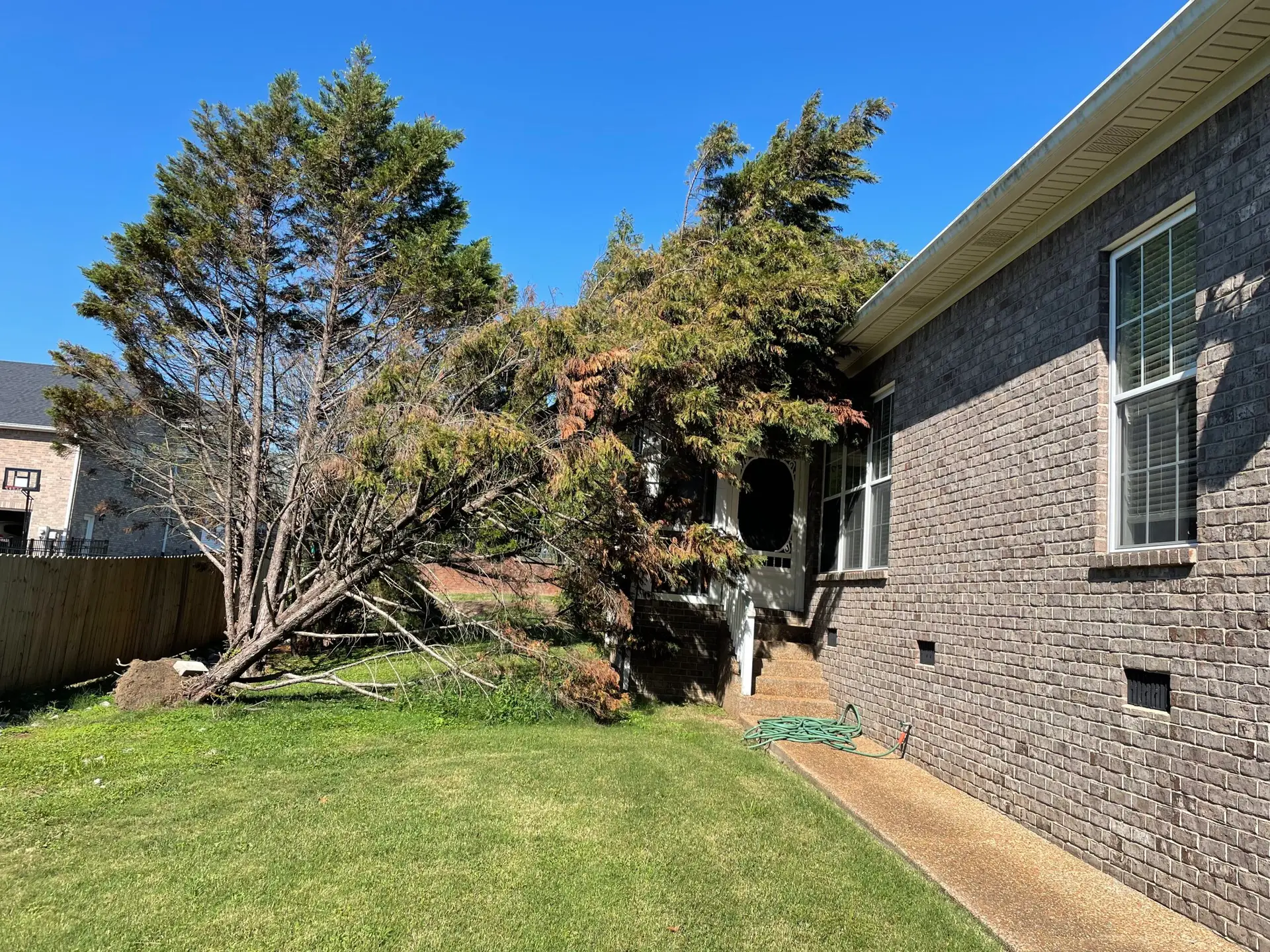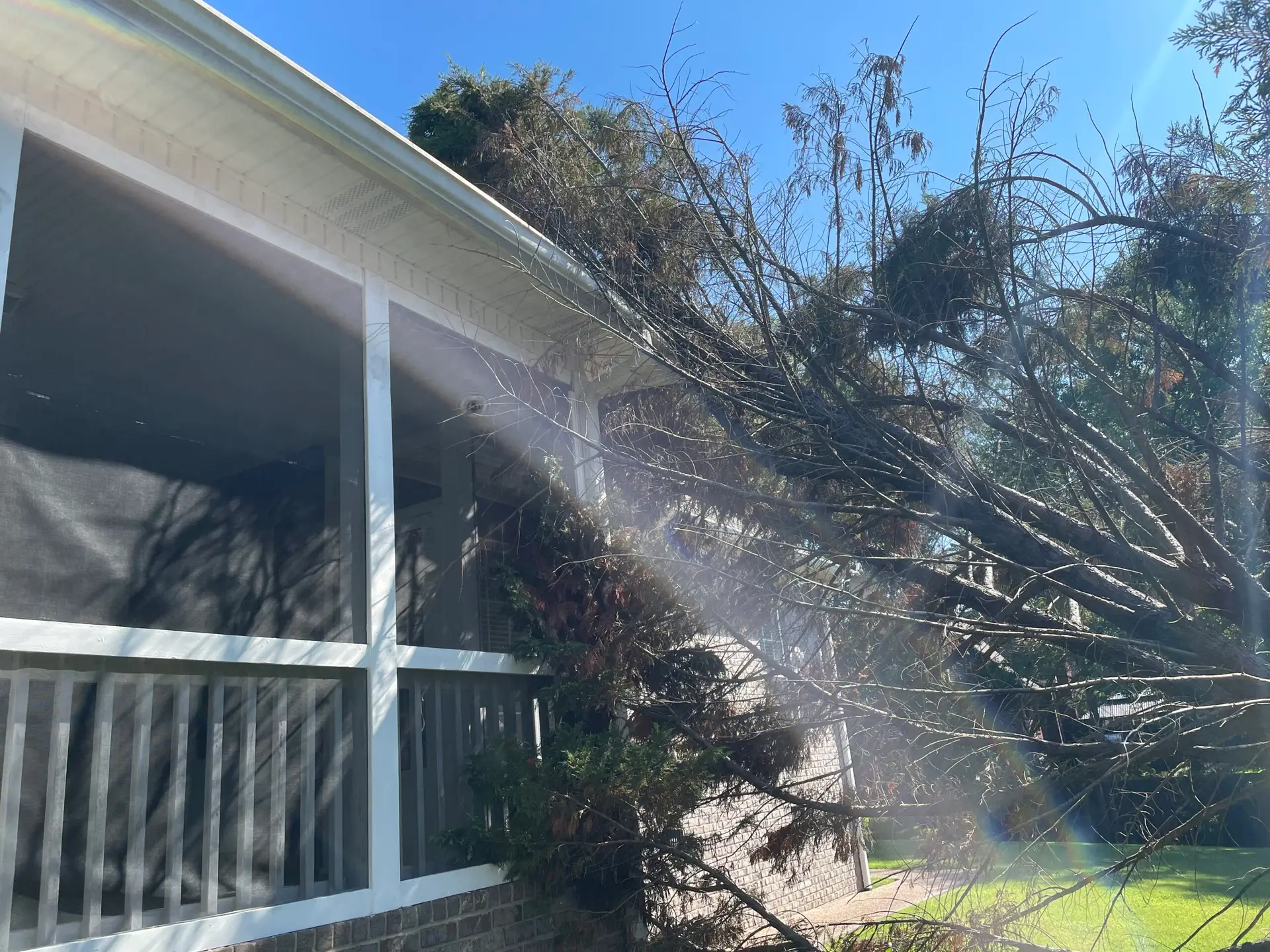
Every year, as storms sweep through our region, the unexpected chaos they bring can be overwhelming. Among the most common and destructive outcomes are trees falling onto homes, wreaking havoc on roofs, siding, gutters, soffit, framing, and more. In this blog post, we’ll delve into the extensive damage fallen trees can cause and how homeowners insurance can be a saving grace during these challenging times.
Section 1: The Impact of Fallen Trees
When a mighty tree succumbs to the forces of a storm and lands on your home, the aftermath can be disastrous, affecting several crucial areas:
- Roof Damage: The weight of a falling tree can lead to significant structural damage, resulting in holes, punctures, or even complete collapse. Water damage and subsequent leaks can exacerbate the situation.
- Siding Damage: Your home’s siding can bear the brunt of the impact, ranging from minor dents to complete destruction, compromising your home’s exterior protection.
- Gutter Damage: Gutters, vital for water diversion, can be torn away, reducing their effectiveness and potentially leading to water-related issues.
- Soffit Damage: Falling trees can damage or destroy the soffit, creating openings for water, pests, and debris to infiltrate your home.
- Framing Damage: Impact with a tree can harm the framing of your home, potentially causing structural issues that are costly to repair.

Section 2: The Role of Homeowners Insurance
In the face of such extensive damage, homeowners insurance acts as a lifeline, offering essential assistance:
- Tree Removal: Many policies cover the cost of removing fallen trees, providing significant financial relief given the potentially high removal expenses.
- Property Damage Coverage: Homeowners insurance typically covers damages caused by fallen trees, encompassing repairs to the roof, siding, gutters, soffit, and framing. Thorough documentation aids in the claims process.
- Additional Living Expenses: If your home becomes uninhabitable, insurance may cover additional living expenses like temporary accommodations and meals.
- Liability Coverage: If a fallen tree damages your neighbor’s home, your homeowners insurance can help cover their repair costs, averting potential disputes.
Section 3: Preventing Tree-Related Damage
While weather remains beyond our control, proactive measures can reduce risks:
- Regular Tree Maintenance: Trim and inspect trees regularly with the help of an arborist. Pruning dead or weak branches enhances their storm resistance.
- Remove Hazardous Trees: Diseased, unstable, or overly close trees can pose threats. Consider removing them before they become perilous.
- Secure Loose Objects: Prior to storms, secure or remove loose items like outdoor furniture, minimizing the risk of projectiles in high winds.
- Reinforce Your Home: Strengthen your home with hurricane straps or anchor systems to withstand the impact of fallen trees.
In conclusion, storms and falling trees can inflict extensive damage on homes, but homeowners insurance offers vital coverage for tree removal and property damage. Preemptive measures and regular tree maintenance can mitigate these incidents. When in need of prompt and reliable tree removal and damage remediation services, turn to No Limit Roofing and Exteriors. Our swift response and seamless collaboration with insurance companies ensure your repairs are completed efficiently, safeguarding your home and peace of mind. Remember, when the storm hits, we’ve got you covered!
Follow us on Facebook: No Limit Roofing and Exteriors on Facebook
